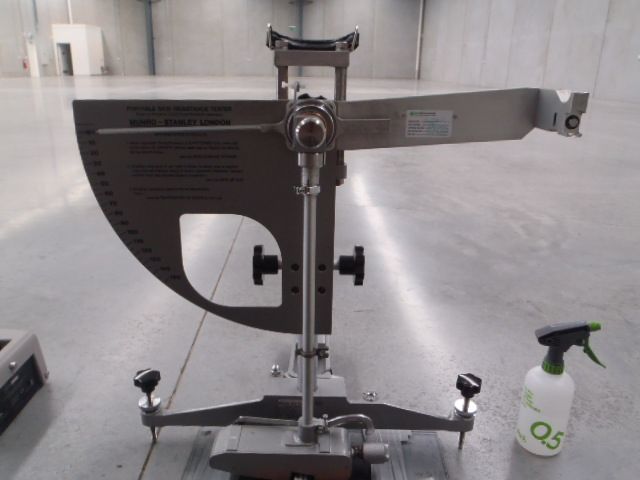The first time you see your onsite slip resistance test report on your Melbourne building, you may be a little confused as to what it means to you. This test is an analytical one, meaning your results will not state if the surface tested is ‘good or bad’ but rather provide a test value for you to work with. This value will tell you the current slip resistance of the surface and, when considering why testing was conducted, and will assist you in managing the surface.
Your onsite slip resistance test was conducted to Australian Standard 4663:2013 Appendix A and/or Appendix B. Appendix A refers to the wet pendulum method of determining slip resistance whilst appendix B is the dry floor friction test (DFFT). The wet pendulum test provides a British Pendulum Number (BPN) for each location tested. A total of five locations are tested and the average of these BPN’s will generate a Slip Resistance Value (SRV) for that surface. The Dry FFT generates a coefficient of friction of the surface under dry conditions. For both testing methods, the higher the number, the greater the degree of slip resistance.
Whilst considering the reason testing was conducted, there are multiple ways for you to utilise the results of a slip resistance test. These include:
- Two handbooks available from Standards Australia, HB197 and HB198, which provide recommendations of slip resistance ratings for various areas such as bathrooms, entry foyers and kitchens etc. These handbooks can be used to determine if the surface tested meets with the recommendations for the area it is installed in.
- Slip resistance decreases over time. Manufacturers often provide a report starting the level of slip resistance of their uninstalled product. If this is available to you, you can compare the results of the current test to the value in the manufacturers report to determine the extent that the slip resistance has decreased.
- Architects may specify a minimum slip resistance rating for an installed product. By determining the classification of the surface tested you can determine if it meets the specified rating. A copy of the relevant tables can be found at: www.floorsliptest.com.au/as-4586-2013-slip-ratings/
- If you arranged testing after a slip and fall incident the test results enable you to estimate the notional contribution the slip resistance of the surface had in the incidence. The lower the rating, the more likely it is that the surface was a significant contributing factor to the incident. A high slip resistance rating may demonstrate that other factors could be responsible for causing a slip and fall. As always, further investigation will always be required.
- An anti-slip contractor may have requested slip resistance testing to assist in the selection of a treatment option. The slip resistance result will allow them to determine how much of an increase in slip resistance is required and therefore which treatment options are best suited.
Overall, the slip resistance value should be used as a way of assessing the risk attributed to that surface.. If your test report indicates a low slip resistance there is a need to implement controls in order to minimise the risk the surface presents. There are a number of measures which can be employed in order to reduce this risk. Speak to our experienced slip resistance consultants if you would like to discuss your options.
Author: Amy Morris

Email: Melbourne@FloorSlipTest.com.au
Amy Morris is a Property Risk Assessor at Safe Environments Victoria with a Bachelor of Science (Forensic Science) and associated Biology major and Forensic Chemistry sub-major. Having worked both nationally and internationally in her field Amy is familiar with current standards and legislation for asbestos and other hazardous substances. Trained under Safe Environments NATA endorsed training program she regularly conducts residential and commercial asbestos inspections and provides consulting services to individuals and companies.


